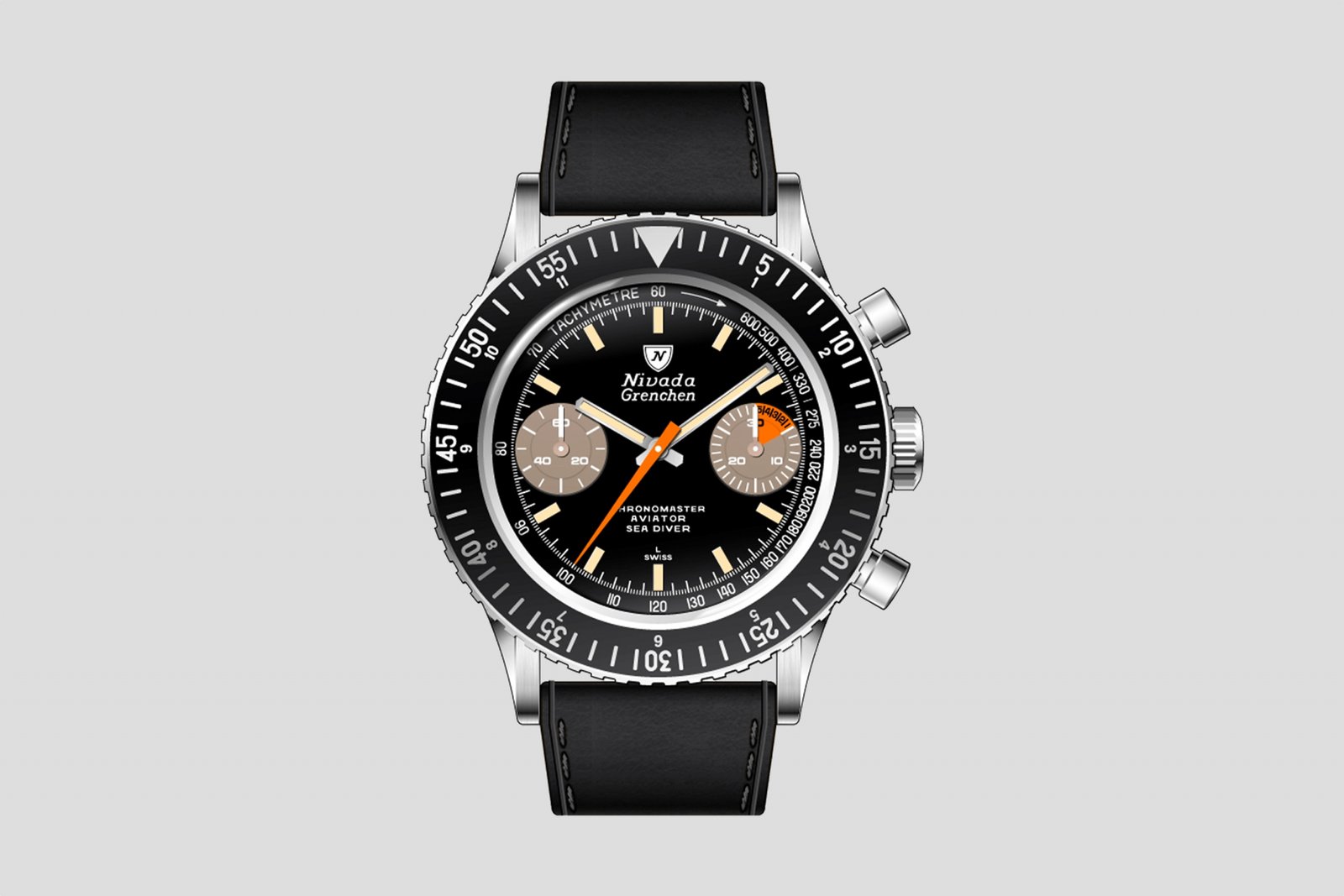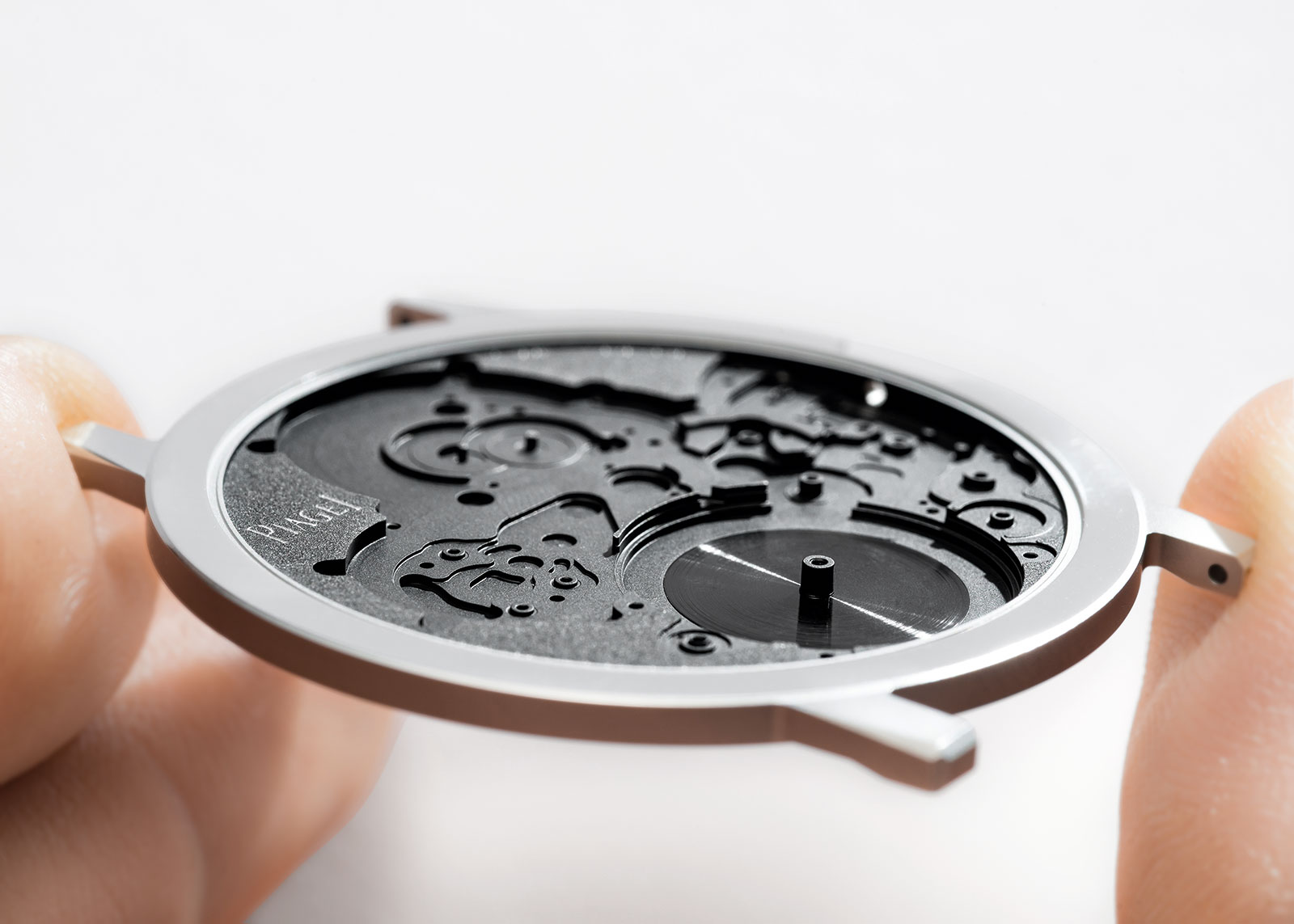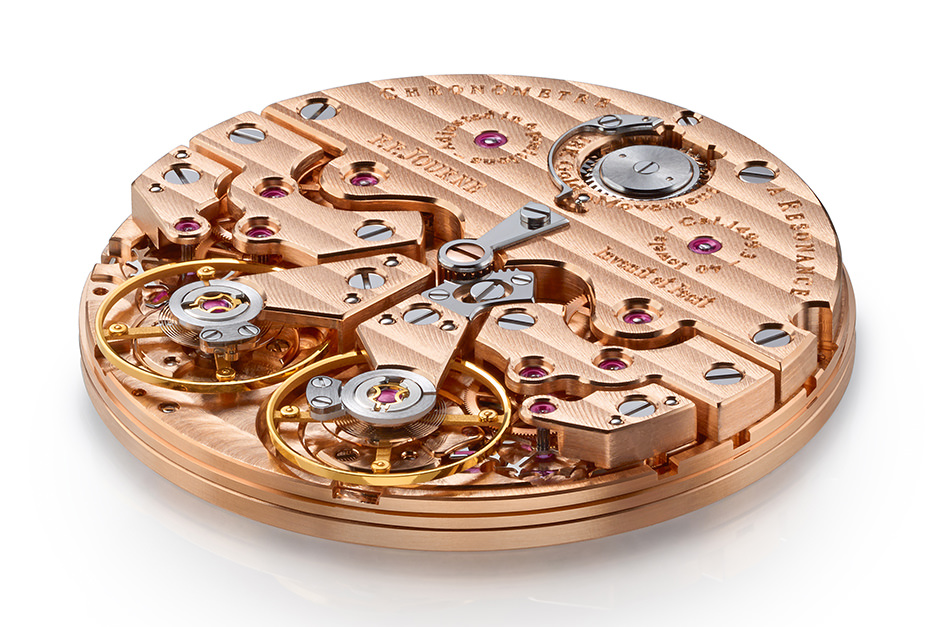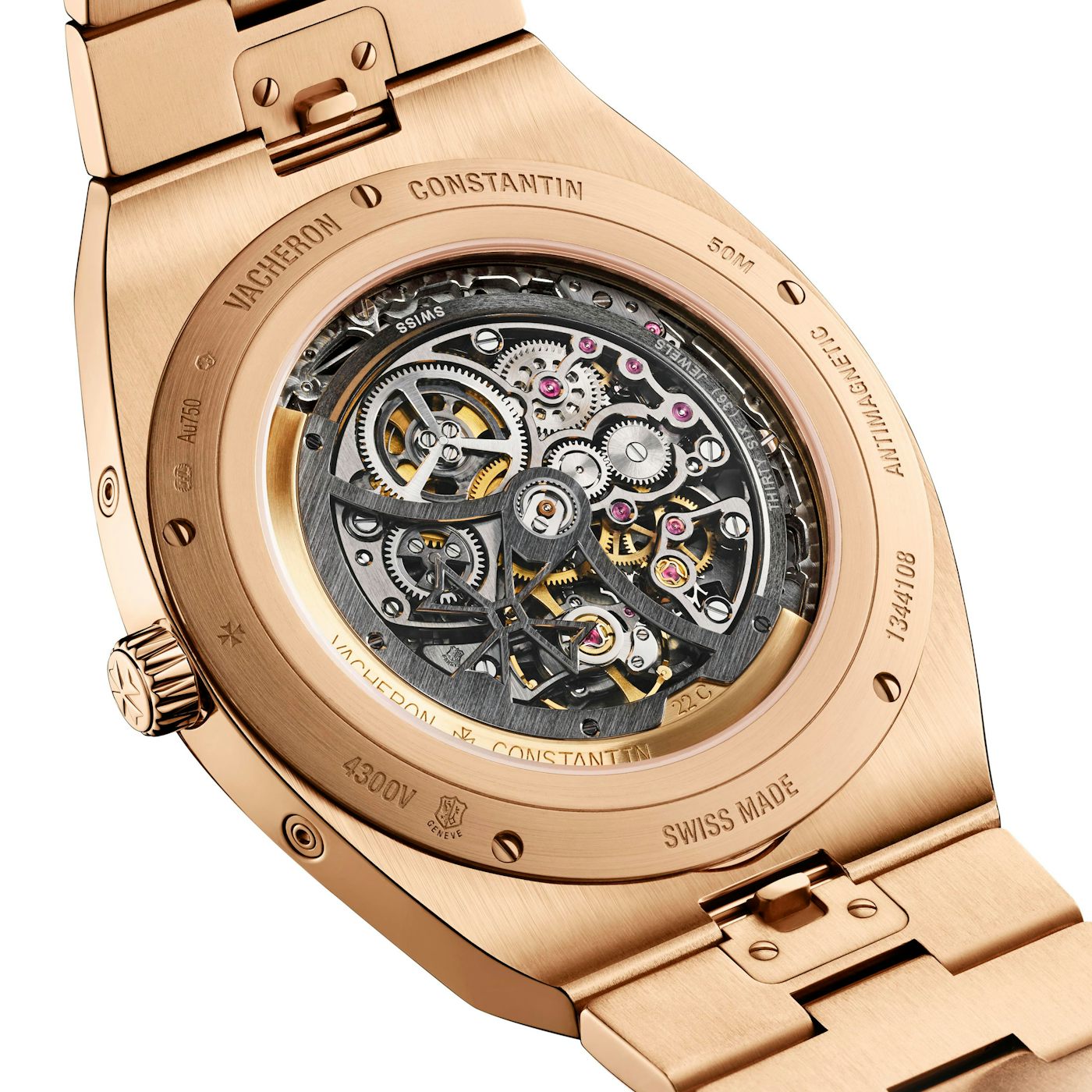The fascination with heritage, or vintage, or 20th century designs in wrist watches is evident in the vast quantity of reissues, homages, look-alikes, recreations and reinterpretations available today, which, we can assume, sell quite well. While I and more than a few other horological scribes have mused that this fascination with the watches of yesteryear belies a nostalgic streak with roots in a kind of digital anxiety, what we tend not to consider in our upbeat-ness is the general lack of imagination required to create heritage style watches. That lack of required imagination may be more an inherent aspect of the enterprise than suggestive of an inability to imagine, and yet the lack of imagination required does suggest that perhaps there is, ultimately, little else to say about heritage designs other than at one point in the not too distant past someone dreamed it up and made it. Beyond that and a little historical context, what is there to say?

As my own spilt ink on heritage designs over the years should make obvious, there’s something to talk about, but it rarely goes beyond preference, opinion and taxonomy. We hear people say that they like this or that design, or (just as lazily) that the design is inherently good or bad, or that the design derives from this or that moment or impulse or necessity. All this can entertain many of us for extended intervals. For me, that interval may have passed.
I find myself more interested in how watches relate to right now, how the edge of mechanical and aesthetic innovation relates to the moment we are living in. Yes, objects and ideas from the past will always be a part of the present – perhaps now more than ever – but I’m not so interested in those nostalgic features of our present culture. Nostalgia, I’m realizing, tends to run shallow. Gerald Genta’s Royal Oak just sold for over $2-million, but that does nothing for our understanding of much beyond how concentrated wealth is redistributed in a 6-minute bidding war. I want to be in deeper conversations that engage nowness, our present condition, our state of the world as we must confront it here in our lives. Looking at older watches and designs only really exposes our tendency toward nostalgia, which isn’t very interesting or, perhaps, even relevant. The escapism of nostalgia has, alas, grown boring to me. That horse is dead, and I certainly helped clobbered it.

I want to focus on the present and the future more actively, to imagine ideals and solutions and whatever, as long as it’s imaginative, creative, and not falling back on lazy, emotionally provocative idealizations of the past. Such a backward-looking tendency is at the heart of a lot of bad ideas, among them all forms of Fascism (Make Whatever Great Again, Restore The Motherland, etc…). I believe imagination and creativity to be crucial to realizing positive ideals, to generating real solutions to real problems, to finding happiness and pleasure and liberty and freedom and all the ideals I’ve come to value as the lucky recipient of most of those throughout my privileged white-male-straight-able-bodied-affluent American life.
To the extent that the way we think about watches is a tell-tale sign of how we think more generally, dwelling on vintage designs that amount to nostalgic fashion watches has become a mental cul de sac. “Look kids, there’s Big Ben!” says Chevy Chase repeatedly as he fails to break free of a London traffic circle. The gag is up. Pull over and let me out. I’m going to the Swatch store. I’ll see you later, in the future, when you finally get sick of Big Ben.

Watches have always been, among other things, an embodiment of ideas and ideals. Mechanically, the ideal of perfect timekeeping – and more so the very idea of absolute time – has been a driving force of innovation for centuries, a philosophical fascination going back to Plato and his elders, a conceptual bugger that Einstein further buggered, opening the truth and the mystery of time itself after looking at a clock while riding on a train. Technologically, watches have been little experiments in mechanical ideas, new materials, novel solutions to old problems, physical elegance and efficiency, originality, creativity, and ingenuity. Aesthetically watches have been little artworks where the artist can play and create with wild abandon, or with intense restraint, with minimalist elegance or maximalist garishness or any waypoint in between. Philosophically, watches have served as metaphors for God’s handiwork, as the centerpiece of intellectual contemplation, as physical embodiments of abstract mathematical concepts, and generally as the thinking-person’s companion. That’s the stuff I crave – how horological innovation exists at the bleeding edge of human achievement – not how some vintage-styled watch pairs with pre-faded jeans. The fascination with pre-existing designs is a distraction from all that’s holy about horology.
Granted, the very notion of a mechanical watch is, today, a bit farcical as an embodiment of current and/or future-looking ideas and ideals. Artificial intelligence is now self-generating better silicon circuits and operating code than we humans can, and so on with the nowness of now. Mechanical watches are, to an extent, truly irrelevant.

But watches can still present us with novel intellectual, philosophical, and even quasi-spiritual experiences and inspiration, just as, say, a game of chess can still reveal new possibilities, strategies, concepts, configurations and, yes, even dramas – all this despite the game being centuries old and AI now defeating humans. Chess may be old, but playing chess is hardly a nostalgic act. The recreation of vintage watches is akin to re-creating specific chess matches. It may be useful as a kind of tutorial – perhaps even as an awe inspiring exploration – but it makes zero sense if one wants to actually engage in a lived experience right now to play out a pre-existing game, or to recreate a pre-existing watch. Omega re-creating the wonderful 321 movement was cool, but what did we learn from that? I didn’t learn a thing, other than that nostalgia is still a powerful cultural force, which I already knew – so, indeed, I learned nothing from the recreation of the Caliber 321. It was, according to my emerging standards, a pointless exercise. There’s value to be found in advancing watchmaking, but little to be found in fixating on recreating from pre-existing designs.

A younger and rather brilliant friend of mine, Ben, believes I’m guilty of a kind of nostalgic intellectualism. He told me my interest in big philosophical questions and willingness to engage them reminded him of the #darkacademia meme, which basically pokes fun at the high-brow brooding intellectualism of the 20th century. It’s the kids of Gen Z and Y or whatever who play with #darkacademia, of course, mocking folks like me who may have earnestly worn tweed blazers while earnestly reading Derrida while earnestly chain smoking filter-less cigarettes into the wee hours with an earnest scowl on my face. Guilty as charged. I may be the last vestige of what the #darkacademia meme mocks. But what the kids seem to fail to see is that their generation is oddly fixated on that moment. Ben wants a Tudor Black Bay 58, which unimaginatively reimagines a watch from the era of Derrida, and I want a BVLGARI ultra-thin perpetual calendar which reimagines only the very notion of pushing mechanical micro-technology as far as possible. I want to take Derrida forward. The kids want to keep circling around and around in the cul de sac of nostalgic fascination and shallow fashion statements and Filson jackets. I always thought I’d become more nostalgic as I got older, but it seems that nostalgia is as prone to nonlinearity and burn-out as any cultural inclination.

Or maybe the kids are right with their #darkacademia meme; maybe I just long for a postmodernism that’s not so self-conscious and prone to memification and mockery. Maybe I long for sincere philosophical ponderance, which may be, in fact, itself a nostalgic longing. But here we find ourselves in yet another cul de sac. What I really want is an even thinner BVLGARI perpetual calendar built from new kinds of titanium with novel finishes.
What does unite the kids and me is our agreement that watches can and do represent something other than watches, that watches are admittedly not useful tools, but metaphors and embodiments of ideas and, sometimes, ideals. I think the distinction that’s emerging for me, and which is at the root of my mounting distaste for vintage-inspired designs and recreations, is that I am growing bored with shallow nostalgic ideas and am growing fascinated with the ideas that exist in the most forward-thinking mechanical watches being made right now.

I think this emerging preference represents a tectonic shift in my understanding of horology, one borne of a better understanding of mechanics more generally through my work with our resident (and actual) rocket scientist David Flett, who elucidates for me repeatedly the fascinating mechanics to be found in our How Watches Work podcast series. Ultimately, this is what I had in mind, however blurrily, when I came up with the phrase Beyond The Dial, that there was something beyond the surface of the watch that was far more compelling and able to sustain – no, better: to expand continually – my fascination with watches. Perhaps I’m really saying that I may be ready to actually go beyond the dial, and that doing so may require letting go of nostalgia and embracing whatever emerges when we do.



